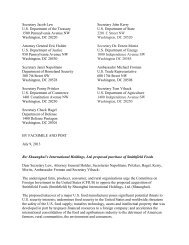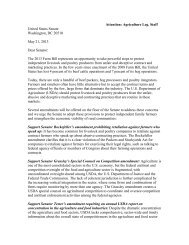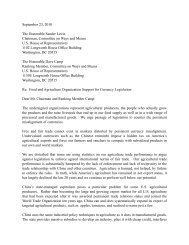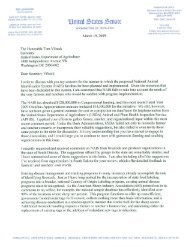Exhibit 8, 100416 Brazil FMD Risk Evaluation - R-Calf
Exhibit 8, 100416 Brazil FMD Risk Evaluation - R-Calf
Exhibit 8, 100416 Brazil FMD Risk Evaluation - R-Calf
Create successful ePaper yourself
Turn your PDF publications into a flip-book with our unique Google optimized e-Paper software.
The minimum period required before restocking with sentinel animals after disinfection is 30 days<br />
for <strong>FMD</strong> and 10 days for CSF. Sentinel animals (young, weaned, unvaccinated animals) are<br />
introduced to the holding and held there for at least 30 days. The sentinel animals undergo serologic<br />
testing on introduction and at 15 days and 30 days after introduction. They are also subjected to<br />
weekly clinical evaluation, including measurement of body temperature. If both clinical exams and<br />
laboratory testing yield negative results at the end of the 30-day period, the facility may gradually<br />
carry out a controlled repopulation, under the supervision of the official veterinary service. If any of<br />
the sentinel animals test positive on serologic evaluation, all other animals are killed and the process<br />
starts again. The contingency measures applied in protection and surveillance zones are maintained<br />
until the property has been determined to be free of disease [3, 4].<br />
In 2005, Santa Catarina reported and investigated 83 notifications of reportable disease suspicions in<br />
holdings with <strong>FMD</strong>-susceptible animals. The State investigated 30 notifications for vesicular<br />
disease, 13 of which were due to trauma and 17 of which were due to diverse intoxications. In 2006,<br />
Santa Catarina reported and investigated 201 notifications of reportable disease suspicions in<br />
holdings with <strong>FMD</strong>-susceptible animals, 81 of which were investigated as vesicular disease<br />
suspicions. These were all found to be unfounded, with 41 due to traumatic injuries and 40 due to<br />
intoxication[4].<br />
Santa Catarina did not report any suspected cases of CSF in 2005 and 2006; however three suspected<br />
cases were reported in 2007. All of these were investigated and subsequently determined to be<br />
negative for CSF [3].<br />
Conclusions:<br />
<strong>Brazil</strong> has effective disease control and response programs for <strong>FMD</strong> and other notifiable ruminant<br />
and swine diseases. Santa Catarina has developed specific contingency plans for immediate action<br />
in any emergency situation. The State handles animal health emergencies, establishes coordinating<br />
committees and emergency animal health technical groups, defines strategies and plans of action,<br />
and, when necessary, carries out the appropriate control measures within a timeframe compatible<br />
with a state of emergency. Quarantine and movement restriction decisions are made by State<br />
officials with input from Federal authorities. There are also systems for notification and training that<br />
ensure emergency preparedness and response with a legal framework to authorize needed actions.<br />
APHIS concludes CIDASC has the capabilities to respond rapidly and effectively to an animal<br />
disease outbreak and limit the spread of the disease should an outbreak occur.<br />
Release Assessment Conclusions<br />
APHIS identified risk factors associated with importing <strong>FMD</strong>-susceptible species or their products to<br />
the United States from Santa Catarina. APHIS discussed these risk factors in the context of the<br />
potential for counterbalancing circumstances or applying appropriate risk mitigations to reduce the<br />
risk of introducing and establishing <strong>FMD</strong> or other swine notifiable diseases under evaluation in the<br />
United States. The risk mitigation procedures, which will be defined in the proposed rule, include<br />
various forms of verification and inspection to which APHIS will propose that MAPA certify to<br />
provide confidence that susceptible animals and their products meet acceptable export criteria.<br />
APHIS <strong>Evaluation</strong> of the Status of the <strong>Brazil</strong>ian State of Santa Catarina 60











